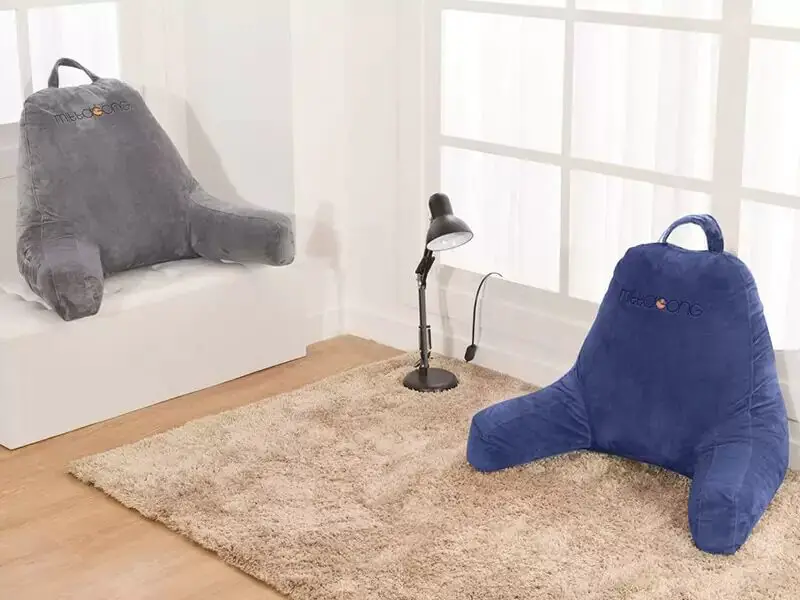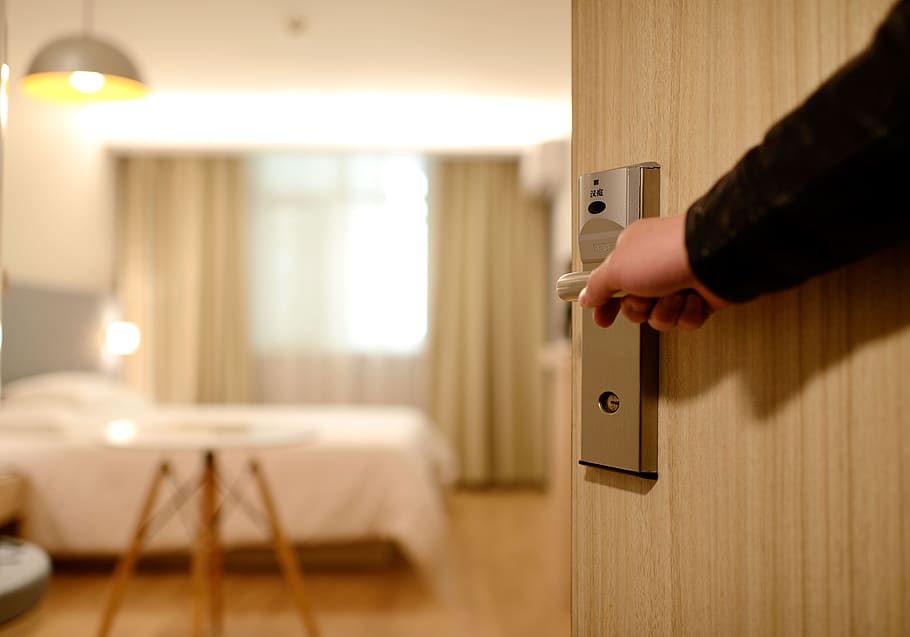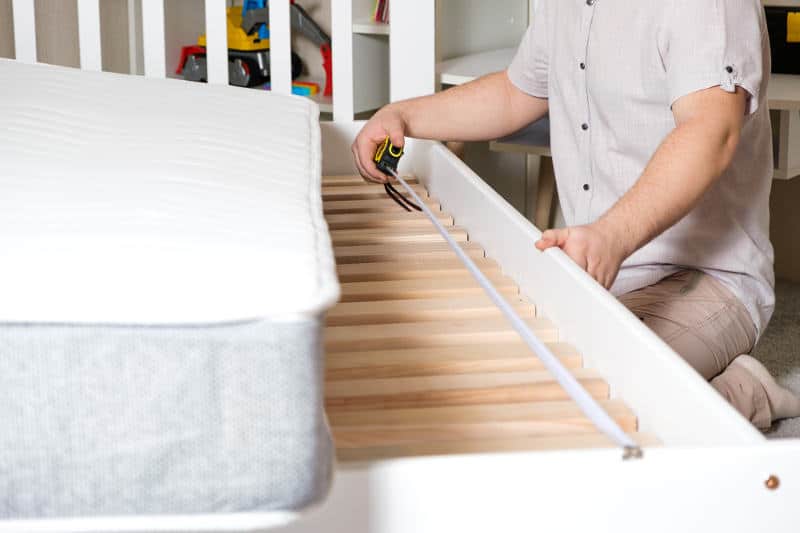When you feel comfortable, things come more naturally and when you want to watch TV or work from bed but have a poor back, sit up in bed comfortably can frequently be painful.
It can be exhausting from the uncomfortable headboard to the chilly hard wall.
- Pick the Proper Pillows.
- Position your cushions so you can sit up comfortably.
- Hold your head still.
- Treat pressure sores.
This article focuses on explaining in more detail the aforementioned stages and how they can assist you in sitting up in bed.
Learn how to make sitting up in bed more pleasant by reading on.
5 ways to Sit Up in Bed Comfortably:
1. Pick the Proper Pillows:

Your experience sitting up in bed will be greatly influenced by the type of pillows you select.
They will be your main source of help. You’ll struggle if they’re uncomfortable.
You can adjust your current pillows to be more comfortable if you wish to sit up in bed for an extended amount of time, or you can get an excellent sit-up pillow.
It is preferable to get sit-up pillows from a physical store as opposed to obtaining them online. You can reach out and touch the softer ones when you’re in person.
However, if you plan to buy something online, make sure you read the reviews left by previous customers to make sure you’re getting the right kind of pillow.
2. Choosing the Right Sit-Up Pillow:

Conventional pillows support your head, but sit-up pillows support your entire back, which makes them a little different from regular pillows.
However, the thousands of different sit-up cushion brands virtually appear the same. You should consider the following characteristics before choosing the finest one:
Size:
The majority of sit-up pillows have a triangle design with an armrest on either side.
Your lower and upper backs are supported, so you should choose one that is as tall as your full back.
Shoulders should be where the top of the pillow rests.
Your lower back will only be supported by a short sit-up pillow, which will eventually become painful.
Armrests:
The armrests on many sit-up pillows are too short to extend past your elbow.
The armrests may not even reach your elbow if you have long arms, which would require you to read with your arms raised.
Find a sit-up pillow with long armrests that reach your wrists to prevent it.
While you sit up in bed comfortably, the additional support will keep your arms at ease.
Materials:
Shredded memory foam is commonly placed into a decent sit-up pillow and covered separately.
Additionally, the memory foam must be certified. This is verified on the label of the pillow.
If not, you might be inhaling dangerous gases from the foam.
Preparing a Sit-Up Pillow:
A sit-up pillow that you acquire online is typically not immediately usable after delivery.
Prior to delivery, the makers compress, roll, and vacuum seals it.
It must be removed from the plastic when it is delivered, laid out flat, and let to expand for a day or two.
Even though the cushion will have grown over the night, the off-gassing can be eliminated in 24 to 48 hours.
Memory foam’s strong chemical smell, known as off-gassing, ultimately goes away.
3. Position your pillows so you can sit up comfortably:

The positioning of your cushions so that you can sit up comfortably is a crucial next step. Of course, if you have a good sit-up pillow, this step is less crucial.
If you have conventional pillows, a pillow arrangement will be necessary.
The following areas are crucial for placing your pillows correctly:
Place two pillows behind you:
For prolonged back support, one pillow is insufficient.
In the extreme, using one will cause discomfort, back pain, and damage to the spinal column.
Two pillows support your entire back and ensure that your spine isn’t being strained.
Also, for optimum cushioning, you might need to stack two pillows, depending on their density.
To put it another way, if your pillows are thin, you will require four of them to sit up in bed comfortably without discomfort.
Put a pillow between your legs:
Your posture is really important when you’re sitting or lying down.
You must understand that your spine has three main bends: an upper, a middle, and a lower bend in order to accomplished.
The easiest technique to maintain these bends, according to studies, is to put a pillow between your legs.
The pressure off your lower back, which eliminates some back difficulties from poor sitting postures, is one important advantage of doing this.
Don’t sit up in bed or cross your legs while doing so. Your hip muscles may be stretched, and back pain may result.
4. Support Your Head:

The third and most frequently forgotten step is to support your head.
A migraine can be brought on by spending a lot of time in one posture while not supporting your head.
This is due to the fact that moving your neck while you read, work, watch TV, or engage in any other activity strains your neck muscles.
Put a pillow behind your head to prevent this. If you’ve established a layer of two thin pillows on your back, use two pillows on your head for uniformity.
Otherwise, you’ll continue to strain your neck.
If you use a sit-up pillow that doesn’t support your neck, this step is even more crucial.
5. Treat Pressure Sores:
Long periods of time spent in one position might lead to pressure sores.
Typically, this is brought on by a reduction in blood flow to the affected areas of your body.
Although they are avoidable, they can be painful and uncomfortable.
Regularly changing your posture is one of the best strategies to prevent pressure sores. Additionally, weight-reducing sleeping cushions are readily available in care stores for this use.

Is It Bad to Sit Up in a Bed Comfortably?
I believe it depends on whom you ask.
On the one hand, the majority of physical therapists and chiropractors will advise you against sitting up in bed because it is one of the worst positions.
And the people who work from home will admit that it can be challenging to resist the seductive idea of spending the day curled up on a soft cushion.
So, the question of whether it is bad to sit up in bed remains.
Because a bed doesn’t provide the same support as a hard surface like an office chair, sitting up in bed for prolonged amounts of time can be detrimental to your health.
Because of this, it initially feels pleasant but eventually hurts your body.
Still, occasionally getting out of bed is necessary. For instance, your bedroom is usually the greatest workspace if you work from home and have little children running about.
Some acid reflux patients are advised to sleep sitting up or with their backs raised.
Some people may have no choice but to sit up in bed if they are unable to leave their beds.
There is a different ideal sitting up in bed position for each of these scenarios.
For instance, if you’re working while seated in bed, your setup and posture should keep you relaxed yet awake enough to maintain concentration.
On the other hand, the setup must be as soft and comfortable as possible if you are sitting upright following back surgery.
Best Way to Work While Sitting Up in Bed:
Despite the freedom and convenience, it affords, working from home has its share of difficulties.
Getting a nice workstation is one of the most important ones, particularly if you live in a small apartment.
There are a few things you need to do to work properly while sitting up in bed, whether you’re doing it out of need or for enjoyment.
While not everyone may have a home office, the majority of us have beds, which are increasingly becoming workstations.
Improve your sitting posture:
Although it may seem cosy to lean against luxurious throw pillows, doing so is bad for your health in the long run.
Use a few of the suggested sitting positions instead.
As previously said, you can support your head by tucking a cushion beneath your knees or in between your legs.
Turn around:
Even at the office desk, staying still for extended periods of time is never a good idea.
It’s essential to get up and move about periodically if you work from your bed for a long period of time.
It’s also suggested to take a daily stroll around the neighbourhood or, at the very least, the house.
Improve your sitting posture:
Although it may seem cosy to lean against luxurious throw pillows, doing so is bad for your health in the long run.
Use one of the seated positions we’ve discussed instead, or, as was already mentioned, a pillow between your legs or under your knees to support your head.
Turn around:
Sitting still for long periods of time is never a smart idea, not even at an official end. Getting up and moving around frequently is crucial if you’re working from your bed for so hours.
A daily walk around the neighbourhood or at the very least the house is also advised.
Purchase a Bed Desk:
A C shape with a laptop rounded over it is the worst position to sit up in bed. Your neck, back, and pretty much all the other muscles that support good posture are put under a lot of strain.
To avoid this and support your upright posture, invest in a bed desk that raises your laptop to eye level.
How to Sleep on the Bed While Sitting Up?
If you’re on the bed sitting up because of a medical condition, you most likely need to sleep in the same position.
While most individuals find it uncomfortable, other people simply cannot sleep in that posture.
So, here are some things you can do to make lying in bed while sleeping easier.
1. Make sure the sleeping area is cosy:
A sit-up pillow will make sleeping on your back more comfortable.
If not, position your pillows as previously mentioned in the article to make sure your back receives adequate support.
But you are not required to put a pillow between your legs. You’ll only feel uncomfortable as a result.
Make sure your bedding is soft and tidy because uncomfortably hard bedding can often cause insomnia.
2. Apply a blanket:
Your body receives a signal that it is time to sleep while you are covered up.
Therefore, wrap your body in a blanket. Use a thin blanket or perhaps a sheet if it’s not cold.
Your feet are the most crucial part to cover up. Before long, the warmth will put you to sleep.
3. Practice your bedtime routine:
Do whatever it is you usually do before go to bed.
Re-enacting your sleeping routine will signal to your body that it is time to sleep, whether it be through reading, listening to music, or watching a movie.
For example, some people discover that drinking warm beverages (but avoiding caffeine-containing ones) aids in falling asleep, while others discover that doing breathing or meditation exercises helps them doze off.
4. Hold your head up:
To prevent stressing your neck when sleeping, keep your head supported.
Use two pillows if you have extra to lay your head.
Even if your head tilts to one side, you remain comfortable thanks to this.
5. Change as necessary:
Changing positions as you sleep promotes healthier sleep and helps to lessen aches and pains.
Move accordingly to how you would if you were resting flat on the bed.
Stretch your legs and get moving if you’re about to nod off and wake up.
Also read: Is Sleeping on the Floor Good for You?
FAQ- How to Sit Up in Bed Comfortably:
All you need to do is arrange a few extra-large pillows underneath your regular bed pillows, just like in this adorable bedroom in North Carolina.
Sit with a back support that is wrapped up like a towel along the curve of your back.
Your knees and hips should always be in a straight line. (If necessary, utilise a footrest or stool.) There should be no leg-crossing and your feet should be level on the floor.
Straighten your back, raise your shoulders, and sit up straight.
Your buttocks should rest against the chair’s back.
While seated, all three of the normal back curves ought to be visible.
To help keep your back’s natural curves, you can use a small towel that has been rolled up or a lumbar roll.
Also read: How To Soften a Hard Memory Foam Pillow?
Conclusion:
You need to be well-prepared if you want to sit up in bed comfortably.
Select the proper pillows, position them so that you can sit comfortably, and use them to support your head.
In order to lessen the detrimental effects sitting up in bed has on your spine, you must also sit with the proper posture.
You can sit up more comfortably without feeling buried in pillows if you can find a suitable sit-up pillow.
If you can’t find one, though, use enough cushions to keep you cosy and your spine protected.










